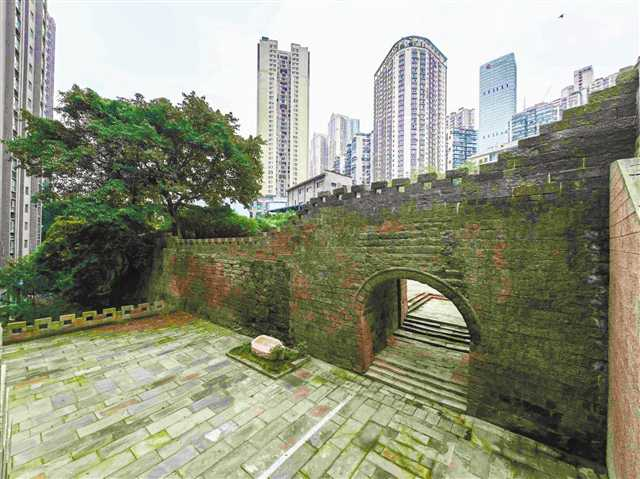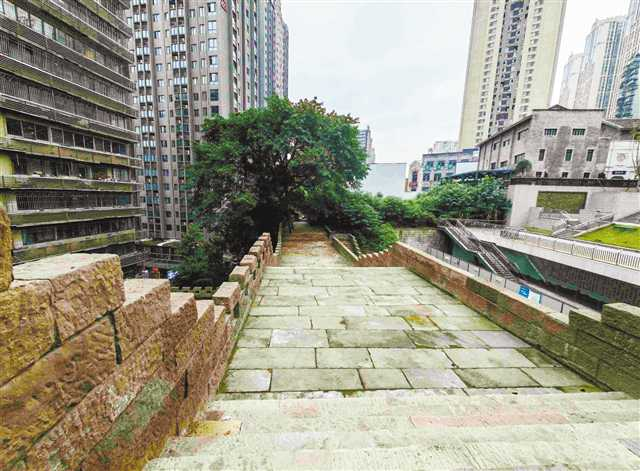Chongqing News
Repairs on the ruins of Taipingmen completed
2023-10-25 14:21:44


The repaired city gate and wall of Taipingmen. (Photographed by Li Sheng / Visual Chongqing)
CHONGQING (CQNEWS) -- The protection project of the Taipingmen-Renhemen City Gate and Wall has passed the acceptance of experts, and the remains will be open to the public soon, Xu Xiaoyu, Director of the Chongqing Yuzhong Cultural Relics Protection Administration, said on October 23.
Located in the core area of the second half of Chongqing, the remaining city wall between Taipingmen and Renhemen is stone-built, with a length of about 546 meters. It’s one of the well-preserved sections of the ancient city walls in Chongqing.
The missing stairs, steps, and battlements (a low wall around the top of a castle with spaces in it) of the ancient city wall have been restored, the heavily weathered stones have been reinforced, and the stone surfaces have been protected.
To restore the former glory of the No.1 gate in ancient Chongqing, cultural relics restoration experts have not only partially restored and protected the ruins of Taipingmen and Renhemen, but also restored the steps leading to Baixiang Street, which connects the upper and lower parts of Chongqing. At the same time, considering that the repaired city wall will be used as a tourist passage, they will make new fences in the form of battlements.
A pedestrian system has been built between Taipingmen and Renhemen, allowing visitors to walk along the top of the ancient wall. The pedestrian system includes the original trail of about 476 meters and a new trail of about 20 meters long, less than 2.5 meters wide. Visitors can walk to Baixiang Street and Sifang Street from Taipingmen.
Guide signs, covering 233 meters, have been placed on Baixiang Street and the square in front of Taipingmen.
Taipingmen is a representative sample of the Chongqing ancient wall with regional characteristics. Xu Xiaoyu said there were two kinds of urban construction patterns in ancient China. As recorded in the Craftsmen’s Records of Zhou Rituals, most cities were square, with four city gates, brick walls, and a central axis making the city bilaterally symmetric; such cities are common in the northern plain. The other type of urban construction is common in southern mountainous areas, featuring an irregular city shape and stone city walls; the number of city gates and the city layout depends on the terrain, according to Guan Zi.
It’s clear that Chongqing is an example of Guan Zi’s city-building idea. Fronting water and with hills at the back, Chongqing boasts a city wall comprising of cliffs and the best moat consisting of the surging river. (Translated by Yuki, Fathom Language Limited)
Editor:Jiang Yiwei
 手机阅读分享话题
手机阅读分享话题